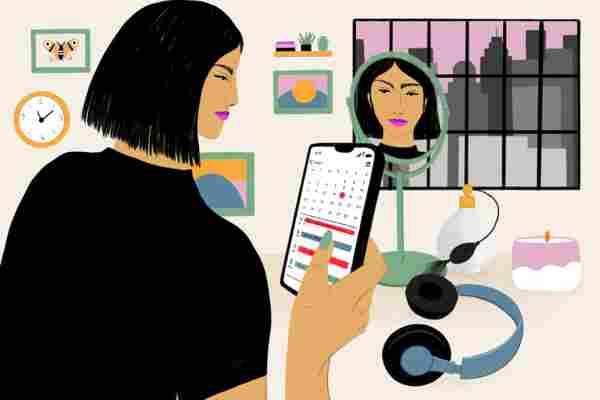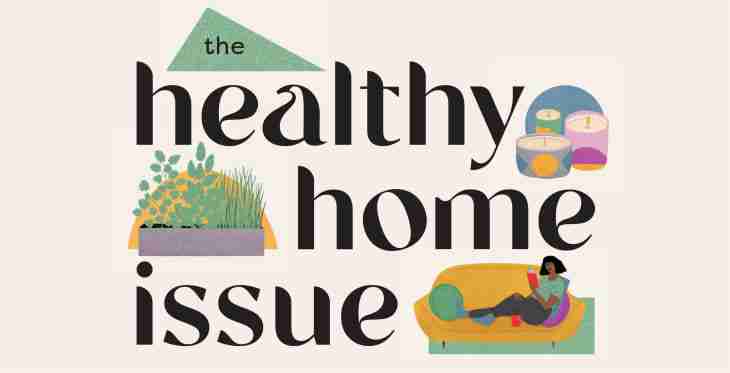

The Healthy Home Issue is an Apartment Therapy package dedicated to wellness where you live. We spoke with therapists, medical doctors, fitness experts, and more to put together a slew of health-focused tips and resources — find more feel-great insights here .
This summer, restaurants and bars are open again, concerts are scheduled, and you may have found yourself with a jam-packed social calendar faster than you can say “Pfizer.”
But just because vaccinated people can venture out in this post-lockdown era doesn’t mean that quiet time at home isn’t still important; in fact, it might be more essential than ever. “All of a sudden, it’s okay to just go outside again after being home for a year,” says Naj Austin , founder and CEO of the virtual wellness organization Ethel’s Club . “There’s something really chaotic about jumping from one extreme aspect to another with no real time to understand what that means.”
These past 16 months have been some of the most traumatic of people’s lives — due to health concerns, loss of a loved one , financial stress , or general anxiety and uncertainty. During this time, many people’s homes have become their safe spaces — literally, to avoid exposure to the coronavirus, as well as figuratively. “Our home is our sanctuary,” explains Priscilla O. Agyeman , a public health professional and founder of Saddie Baddies , a virtual community for women of color to destigmatize mental health.
The pandemic also served as a reminder that the “old way” of doing things — constantly rushing, giving in to hustle culture, and just feeling burned out all the time — wasn’t working. Lockdown forced many people to slow down, which proved to be eye-opening and underscored the importance of rest .
“Even though many of us are so excited to be able to see people again, I think what a lot of us have also realized is how busy we were before COVID and how that wasn’t helpful,” says Yasmine Cheyenne , a teacher, speaker, and advocate on mental health and spiritual wellness. “This is a great time to ask how you can still create time and space for yourself while also having social activities.”
It’s for all of these reasons that we’re big fans of the idea of making plans with your home, of putting the focus on self-connection and reflection in a space where you feel comfortable — yes, even after a year of being inside.
The first step in this process, though, is less about making plans with your home than declining some plans outside of it. Austin shares that she finds herself forgoing more social invitations without an excuse lately, feeling empowered to honor her instincts after spending so much time with herself. “Before [the pandemic], I struggled a lot with needing to come up with an elaborate reason to not go to an event,” she says, “when really, it was just that I didn’t want to go. And that should be more than enough. Now, I’m more comfortable doing that, which is a nice feeling to have. It’s okay to say no.”
Then, once you’ve maintained that room on your calendar, reserve it for yourself in your own space. “Many of us struggle with finding the time to rest, relax, or do something that we enjoy if it’s not already scheduled,” says Cheyenne. “We’re more likely to keep our commitment to ourselves when we have that time blocked into our calendar.”
Cheyenne recommends starting with 10-minute blocks of scheduled R&R if you can. Caregivers, parents, and people whose jobs or schooling make alone time feel like a fantasy can adjust this amount of time as needed, but putting a block on your schedule will make it feel discrete and intentional. When the 10 minutes are up, you can always keep going if you’re enjoying yourself and are able to take that time. “We’re more inclined to honor the ‘appointment’ when we schedule an amount of time that’s actually doable for us,” Cheyenne explains.
Jess Linick, Ph.D., a New York-based clinical psychologist, agrees, telling Apartment Therapy that having a concrete plan written down increases the chances that it’s going to actually happen. “Especially when starting out with a relaxation routine, knowing when, how, and for how long can be really useful in helping us to do it. Before you know it, you’ll have made it a habit.”
And yes, you can — and should — view things like “rest at home” or “self-care” the same way you’d think of a work meeting, doctor’s appointment, or anything else that would find its way onto your calendar. “So many of us are fixated on productivity, which is important as well but not more important than joy, pleasure, leisure, community, or rest,” Agyeman points out. “You can’t have one without the other. Rest doesn’t have to be this reward before or after burnout.”
And whatever your relaxation method of choice, make sure it brings you joy. As Cheyenne puts it, “Taking time at home is a great way to do exactly what you want to do — which we don’t always give ourselves permission to do.”
If you’re stuck for ideas, Dr. Linick suggests meditation, noting that there are plenty of apps out there to help you along the way. “The concept of mindfulness works really well when starting to integrate relaxation practices into your life,” she says. “Other activities could be reading, art, music, playing with pets, looking out the window, taking walks, dancing, writing/journaling, playing games, gardening… literally anything. The beauty of these small practices is they don’t have to be long — it’s the quality, not the quantity, that counts.”
For some people, like Sam Cohen , reading and watching TV are go-to activities. “They distract me and keep my mind focused on something else — a plot, a cake gone awry, gorgeous scenery — which is really my goal when I unwind, as I’m frequently overwhelmed with thoughts during the day due to my anxiety,” she says.
For others, this time at home might involve amplifying your atmosphere. Candi Cronin, who lives with her husband, dog, and two daughters, tells Apartment Therapy that she equates the vibes of autumn with relaxation. “I love the scent of a favorite pumpkin candle, the warmth of a sentimental fleece blanket, or drinking a hot cup of tea with my husband before bed,” she says. “I keep these ‘fall things’ going all year-round because they make me happy.”
Time at home can also mean scheduling specific activities. While at home amid the pandemic, Nicole Ting tried to emulate the feeling of her favorite coffee shop. “I’d make an oat latte for myself in the kitchen, light a candle, and open the windows for natural lighting to flood the room in warmth,” she recalls. “For me, creating an ambiance that provides relief and relaxation involves figuring out the little things that give you joy, seeking them out, and allowing yourself the time, budget, and space to replenish your energy with them.”
Ting’s go-to coffee spot is up and running now, but she still enjoys making espresso-based drinks at home — something that became a fun hobby during the pandemic. “Home is a comforting place to try new things,” she explains. “I’ve continued to recreate the vibes of my favorite coffee shops at home, even with places opening back up; this is a pandemic adaptation that I’ll keep.”
You can also use this time to start a new habit to root yourself at home — that’s right, it’s not too late to begin bread baking or knitting. “Starting a habit, even if it’s something small, can help you get closer to yourself,” says Austin, explaining that she makes a point to water her plants every Sunday while listening to her favorite music. “It’s helpful to have activities that bring you out of your own head.” Like Ting, Austin’s Sunday habit is here to stay post-pandemic. “I see no difference between scheduling me-time, friend-time, and home-time,” she adds.
As the great Cher Horowitz once said in “Clueless,” “Sometimes I have more fun vegging out than when I go partying.” This was true in the “before times,” and it’s still true now. At the end of the day, your home is the one place where you get to turn off your mind, quiet the routine stressors, and just be alone with yourself. That’s one appointment that should always be on your calendar.
Apartment Therapy’s Healthy Home Issue was written and edited independently by the Apartment Therapy editorial team and generously underwritten by Dyson .
